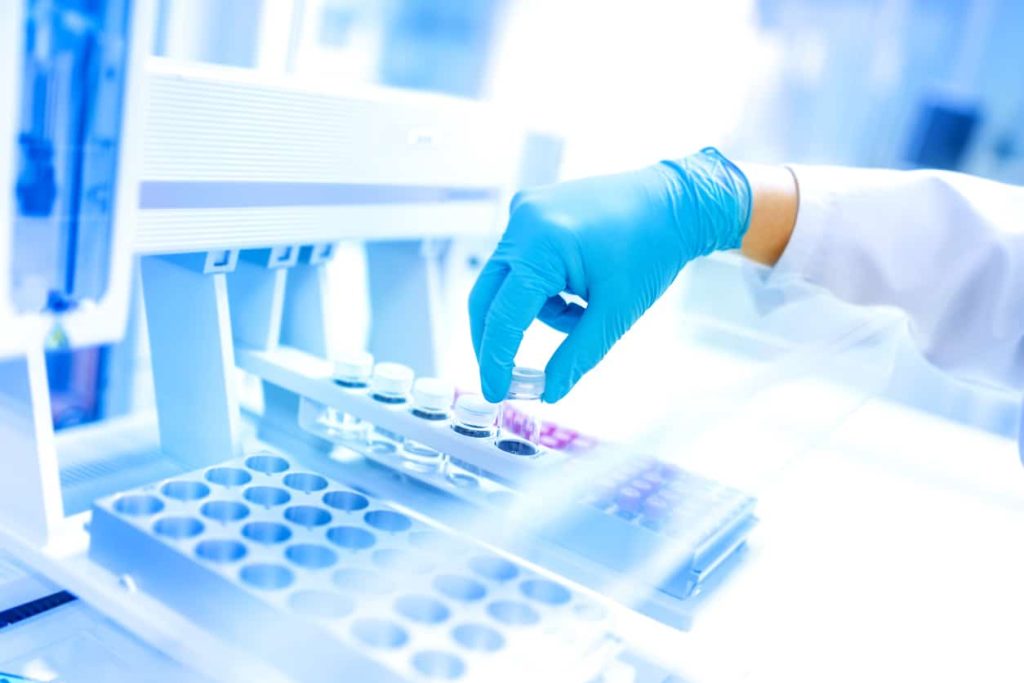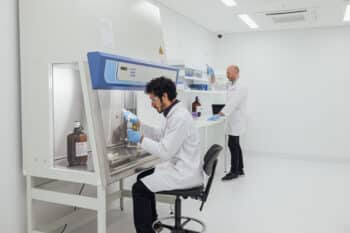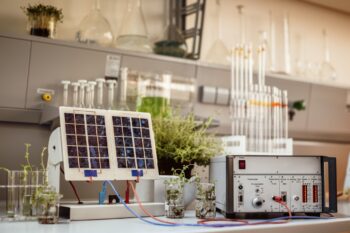Although the types and volumes will vary from facility to facility, the majority of laboratories will have chemicals of some kind housed within them. That means it’s important to properly handle and store them in ways that ensure accidents and incidents are kept to a minimum.
Here, we’ll take a look at the procedures, considerations and approaches your staff should be taking to ensure everyone in your lab knows how to handle and store chemicals in the correct manner.
What are the risks of improper chemical storage?
If we don’t take proper care to handle and store chemicals, we may run the risk of the following:
- Unwanted reactions caused by the mixture of incompatible chemicals. This can result in the generation of heat, fumes, gases or vapours that can create fires or explosions and result in physical damage or toxic exposure.
- Small incidents, that would have previously been easy to control, becoming far more serious due to other materials stored in the vicinity becoming involved.
- In the event of incidents, emergency services may be reluctant or unable to enter a building or laboratory due to uncertainty over the safety of how they’re stored.
- Making the environment unsafe for staff, including laboratory workers, cleaners and maintenance staff.
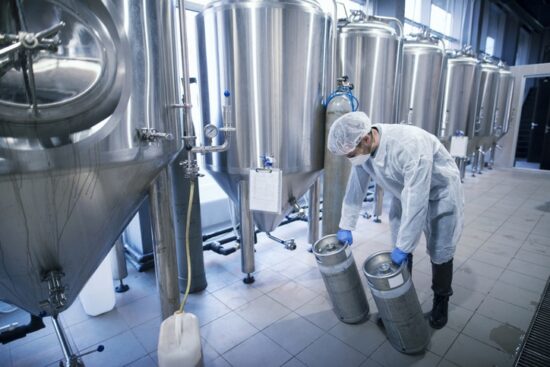
What are the three principles of safe chemical storage?
Separation: Hazardous chemicals should be separated from unsuitable conditions due to their toxicity, flammability or reactivity. Storage cupboards which divide incompatible classes of hazardous chemicals can help to achieve this. Separating them by distance in other buildings is also effective in this regard.
Segregation: Strong acids should be kept away from strong bases, while strong oxidisers should be kept from organic or flammable materials. Highly-flammable liquids, meanwhile, should be kept away from all other materials.
Ventilation: Another essential requirement for the safe storage of hazardous chemicals, ventilation allows for the dilution and extraction of vapours or gases that may escape from containers.
What should I wear when handling chemicals?
Before you start moving chemicals around the lab, it’s essential that you’re wearing the correct Personal Protective Equipment (PPE). At the very least, this should include appropriate chemical-resistant gloves and eye protection, closed-toe shoes and lab coats and/or chemical aprons.
After donning the correct PPE, it’s a good idea to inspect your lab further in order to take note of any potential trip hazards, the locations of workstations and any other areas that tend to get busy. Ensure that exits, passageways, and emergency equipment areas are clear and free of chemicals, and keep full spill kits complete with the right absorbent materials, neutralising agents, cleanup utensils and waste containers close to hand.
Finally, check that all chemical containers have complete labels in good condition and that safety data sheets (SDS) are readily available – these are essential for informing staff of the contents’ properties including health and environmental hazards, protective measures and safety precautions for handling.
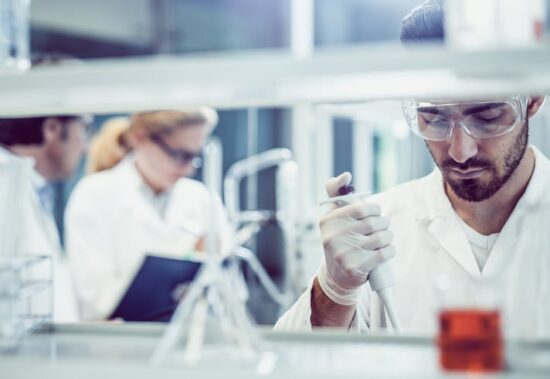
How should I safely move chemicals?
With the environment taken into consideration, you’re ready to start safely transporting your chemicals around the lab. Keep the following best practices in mind when doing so:
- Report visibly degrading chemicals and containers to your lab supervisor or principal investigator – never attempt to move them.
- When moving chemicals, place bottles in leak-proof secondary containers to protect against breakage and spillage.
- When moving multiple, large or heavy containers, always use sturdy carts with wheels large enough to roll over uneven surfaces without tipping or stopping suddenly. If carts are used for secondary containment, make sure the trays are liquid-tight and have sufficient lips on all four sides.
- Avoid transporting chemicals during busy times such as lunch breaks.
- Use freight elevators for moving hazardous chemicals whenever possible to avoid incidents on crowded passenger elevators. Be sure to remove gloves when pushing elevator buttons or opening doors.
- Never leave chemicals unattended.
How should I safely store chemicals?
Correctly handling chemicals is only half the process – make sure you’re safely storing them away, too, by doing the following:
- Label all chemical containers properly.
- Provide a specific storage space for each chemical and return them after each use.
- Store volatile toxics and strong-smelling chemicals in ventilated cabinets.
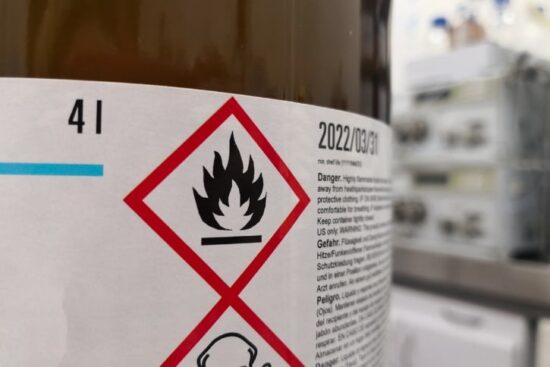
- Store flammable liquids in approved flammable liquid storage cabinets. Small amounts of flammable liquids may be stored in the open, but check with the relevant authority for allowable limits.
- Separate all chemicals, especially liquids, according to compatible groups. Additionally, follow all precautions regarding the storage of incompatible materials, and post a chemical compatibility chart for reference, both in the lab and next to chemical storage rooms.
- Use appropriate resistant secondary containers for corrosive materials to protect cabinets and catch leaks or spills caused by breakage.
- Ensure that containers are tightly sealed to prevent escaping vapours.
- Use designated and labelled refrigerators for storing chemicals. Never store flammable liquids in a refrigerator unless it is specifically designed and approved for such storage. Use only explosion-proof, spark-free refrigerators for storing flammables.
Take care to avoid the following:
- Storing large, heavy containers or liquids on high shelves or cabinets. Keep such items at shoulder level or below.
- Storing bottles on the floor unless they are in some form of secondary containment
- Storing chemicals near heat sources or in direct sunlight.
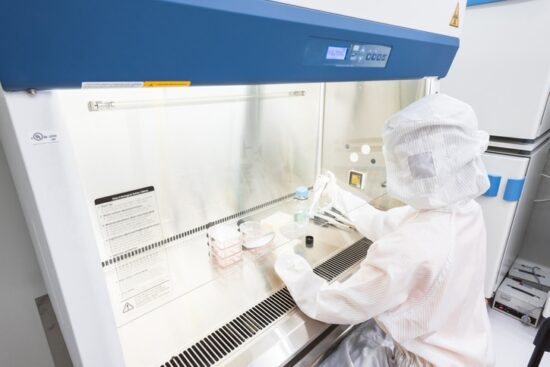
- Storing chemicals in fume hoods. Excessive containers can interfere with airflow and hood performance; only chemicals in use at that time should be in the hood.
- Storing anything on top of cabinets. Sprinkler heads should have at least 18 inches of clearance around them to avoid interfering with the fire suppression system.
- Using benchtops for storage – workspaces should only contain chemicals that are currently in use.
- Storing chemicals indefinitely. Doing so causes powders to harden and liquids to evaporate – dispose of such materials as soon as possible. It’s strongly recommended that all containers be dated when arriving in the lab, and that all manufacturers’ expiration dates be strictly followed.
If you have an upcoming construction project to complete, then the team at InterFocus can help. For more information about our bespoke fitted labs, visit our homepage or call our team on 01223 894 833.

